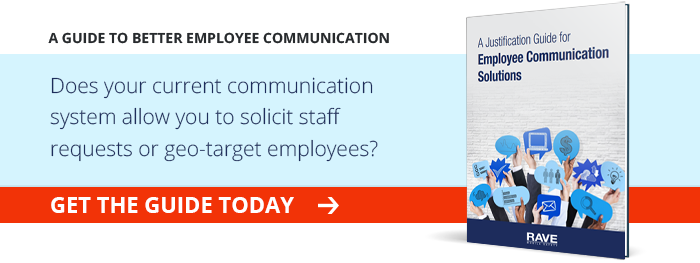The Role of Technology in the 5 “E’s” of Corporate Safety
Training organizations have a tendency to create acronyms or alliterations with the intention of helping businesses more easily remember important concepts. Unfortunately, many of them are instantly forgettable; but there are a few which can be of benefit to businesses if they are used effectively – and one of these is the 5 E’s of corporate safety.
While some training organization acronyms are useful (i.e., the IDEAL model for problem-solving) and others are memorable (i.e. PEBCAK for a computer user error), many fail to do the job. For example, who uses SMARTER and DUMBER, or remember what they stand for? (For reference: “Specific, Measurable, Achievable, Relevant, Timely, Exciting, Recorded” and “Dull, Unrealistic, Mediocre, Boring, Evaporating, Rote”).
It’s much the same with alliterations. The 5 C’s of marketing (Company, Customers, Competitors, Collaborators, and Climate) is a much more effective use of language than the 5 B’s of Budgeting (Benefits, Barometers, Build It, Benchmark it, Make it Better). With regards to the letter E, it is such a versatile letter, there can be combinations of 5 E’s for anything from road safety to teaching science to young children.
The 5 E’s of Corporate Safety
Although the 5 E’s of corporate safety can vary between training organizations, they generally follow the sequence of Education, Engagement, Engineering, Enforcement, and Evaluation. This sequence enables businesses to develop a corporate safety framework that encompasses safety best practices, risk management, and effective safety leadership regardless of the nature of the business or whether it has a remote or on-premises workforce.
Education
Education is obviously the starting point of any corporate safety framework; and while it ticks regulatory boxes for onboarding new employees or conducting mandated training exercises, education can only deliver awareness of safety policies and procedures – it cannot provide real-life experience of how to respond in an emergency or in the aftermath of an accident.
In such circumstances the brain’s “fight or flight” response is to pump adrenaline and hormones into the bloodstream – which drains the brain of the serotonin and dopamine it needs for optimal cognitive function. Therefore, no matter how well employees have been educated on safety policies and procedures, their responses could be comprised if they are unable to think clearly.
One way in which technology can help overcome the issue of employees’ minds going blank during an emergency is an employee safety app. The app can be used to store quick-reference safety policies and procedures, provide safety assistance through geo-targeted notifications and alerts, and support two-way communication during and after an emergency.
Engagement
Technology has made it a lot easier to engage employees with safety best practices. For example, businesses can take advantage of Virtual Reality (VR) technology to put employees in scenarios they may encounter, gauge how they react, and adjust the education stage accordingly. Studies have shown employees that have undergone VR training tend to retain safety procedures for longer.
However, VR safety training is not only expensive, it is impractical to organize evacuations or shelter in place exercises with hundreds of employees wearing VR headsets – notwithstanding that many may be working remotely. It is also time-consuming to review footage of safety training exercises to identify where improvements need to be made on an individual or business-wide scale.
A more cost-effective alternative to VR training is geo-polling. Geo-polling involves sending employees a text message consisting of a question and multiple answers. Employees respond to the text message by pressing a number on their mobile keypads. The responses are collated by the text messaging platform for safety officers to quickly identify where more education is required.
Engineering
Engineering is a broad term that can be used to describe the design, development, implementation, operation, and maintenance of the corporate safety framework. The term can also be used to describe the way in which multiple emergency notification solutions are unified in order to accelerate emergency alerts and responses.
An example of a unified emergency solution is the Rave Alert platform. Rave Alert is primarily an SMS text-based mass notification platform capable of sending emergency alerts to thousands of employees simultaneously. The platform can also enhance internal communication by email, voice broadcast, desktop alert or social media due to its unlimited database segmentation capabilities.
However, Rave Alert can also integrate with other communication methods via Common Alert Protocol (CAP). Therefore, the platform could (for example) broadcast voice alerts over public address systems or send alerts to desktop computers and digital signage systems. Rave Alert is also IPAWS-OPEN and compatible with FEMA’s WebEOC emergency operations center.
Enforcement
Enforcing health and safety best practices on-premises is practically impossible without a health and safety officer standing behind each employee to ensure compliance. Even with CCTV, health and safety officers can find it difficult to monitor employee activity, identify risks to workplace safety, and ensure workplace safety mechanisms are in proper working order.
As should have been made clear in the education and engagement stages, workplace health and safety is everybody’s responsibility; and businesses can empower employees to report risks to workplace via a tip texting service. This can be a standalone service – where businesses provide a dedicated number for employees to text safety concerns – or a feature of the employee safety app.
For employees who are assigned specific health and safety tasks – for example checking fire alarms work or that AEDs have fully charged batteries – a platform such as Rave Collaborate can send automated reminders and prompt employees to record when the tasks are completed. In this way businesses can stay on top of risk management and effective safety leadership.
Evaluation
The evaluation process consists of reviewing the expectations of the corporate safety framework, determining whether the education, engagement, engineering, and enforcement stages are achieving the desired results, and identifying where changes should be made to strengthen the framework and make the business more resilient against threats to health and safety.
Again, technology has a role in the review process by providing safety leaders with single pane reports, data, and analytics. For example, the depth and granularity of information provided by the Rave Alert platform can help businesses make better-informed decisions about what changes need to be made to health and safety policies to better protect employees from workplace risks.
To find out more about Rave Alert’s capabilities, or to discuss any of the technologies mentioned above, do not hesitate to get in touch. Our team of safety experts will be happy to answer any questions and organize a demo of Rave Alert tailored to your requirements so you can evaluate the benefits of employee safety apps, geo-polling, unified communications, and collaboration platforms.





